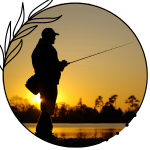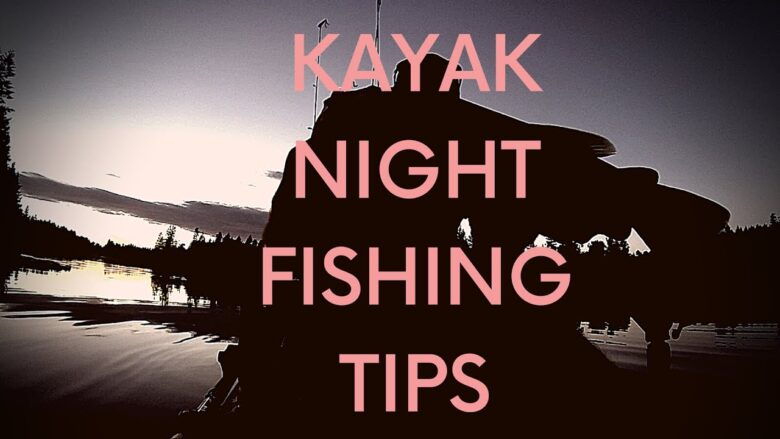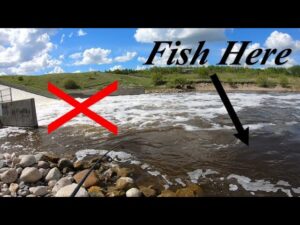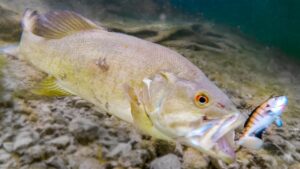Importance of Night Fishing Techniques
To master the art of night fishing techniques with maximum efficiency, understanding the importance of these techniques is crucial. We will explore the benefits of night fishing and the unique challenges it presents. Embrace the advantages and tackle the obstacles head-on to enhance your nocturnal fishing experience.
Benefits of Night Fishing
Night fishing is not just an exciting recreational activity, but it has many unique benefits. It gives fishers a different experience than daytime fishing, allowing them to try new methods and savor the peace of night.
- Boosted Catch Rates: Fish are more lively at night, which makes it an awesome opportunity for fishing. The darkness allows these creatures to feel more secure and go in search of food, raising your chances of catching a big one.
- Less Competition: Night fishing usually brings in fewer fishers than daytime fishing. This means less competition for the best spots and the chance to relish in an undisturbed environment on the water, without any distractions or overcrowding.
- Cooler Weather: Fishing during the night can give some respite from sweltering daytime temperatures, particularly in summer. The cooler air makes it more enjoyable for both fishers and fish, ensuring a pleasant experience for all.
- Mystery and Thrill: The enigma surrounding night fishing includes an element of mystery and thrill. The darkness creates a feeling of anticipation as you wait for that slight nibble or strong tug on your line, increasing the excitement of the sport.
- Spectacular Views: Seeing nature’s nocturnal beauty is another perk of night fishing. The moon reflecting off rippling waters, stars in the sky, and the occasional sighting of wildlife make for a captivating atmosphere that boosts the overall joy of this singular pastime.
As the sun sets and night takes over, underwater ecosystems go through drastic changes. Some nocturnal species come alive while others hide. Investigating these unique dynamics can give us knowledge about fish behavior and habitat preferences.
Historical Importance: Throughout history, night fishing has been important for the survival and livelihood of various communities. Before modern technology, many coastal and riverside villages relied on this nighttime activity to survive. The cover of darkness allowed them to fish without being noticed, ensuring an abundant catch.
Fishing at night comes with its own difficulties, such as navigating in the dark and catching your own shadow, but at least you don’t have to worry about dreadful tan lines!
Unique Challenges of Night Fishing
Night fishing has its own challenges. It’s dark and visibility is limited. This can mess with depth perception, making it hard to judge distances accurately.
Let’s look at some of the main issues:
- Limited Visibility: No natural light makes it difficult to spot fish movements or underwater structures. Anglers need to use other senses or artificial light to get around.
- Depth Perception: No natural light makes judging water depth tricky. This can affect lure presentation and lead to missed opportunities.
- Noise Management: Sounds carry differently at night, meaning fish are more sensitive to vibrations or loud noises. Anglers need to minimize any disturbances that could scare away potential catches.
- Safety Concerns: At night, there are reduced visibility for other boaters and hazards like tree stumps and rocks. Adequate lighting and navigation tools are essential for a safe experience.
Night fishing also has its advantages, like less boat traffic and fewer anglers competing for catches.
Plus, a study by the Journal of Fish Biology found certain species of fish behave differently at night, making them more receptive to specific bait and lures.
So, get ready for an adventure and catch the Loch Ness Monster’s distant cousin with the essentials for night fishing – who needs sleep anyway?
Essential Gear for Night Fishing
To ensure a successful night fishing expedition, equip yourself with the essential gear. In order to tackle the challenges of night fishing, fishing rods and reels, fishing lines and hooks, bait and lures, and lighting equipment provide effective solutions.
Fishing Rods and Reels
Equip yourself with the finest fishing line and hooks. Catch more fish than a curious cat with nine lives and a boatload!
Fishing Lines and Hooks
Fishing lines and hooks are a must-have for night fishing. They let you catch fish faster and safer. Here’s a table with details:
| Type of Fishing Line | Description |
|---|---|
| Monofilament | Versatile, durable and not too visible underwater. |
| Braided | Super strong and resistant to wear. You can feel even the tiniest nibbles. |
| Fluorocarbon | Almost invisible in water and sinks quickly. Perfect for careful fish or deepwater. |
Also, make sure you use the right-sized hook. Bigger numbers mean smaller hooks. Some hooks are specially made for night fishing and glow!
Fishhooks have been around for thousands of years. The oldest ones, over 23,000 years old, were found in Indonesia. They were made from shells and animal bones – showing how creative humans can be when it comes to getting food.
In conclusion, fishing lines and hooks are essential for night fishing. Different types are tailored to different conditions. Also, their history demonstrates how important they’ve been to us for ages. Need bait? Just bring a flashlight and watch the fish flock in!
Bait and Lures
Bait and lures are essential for night fishing. The right selection can make all the difference in having a successful experience. Here’s a table of some commonly used bait and lures:
| Type | Description |
|---|---|
| Glow | These emit luminosity to draw in fish. |
| Spinner | Spinners create vibrations and flashes underwater, catching the eye of nearby fish. |
| Soft Plastics | These mimic real baitfish or worms, making them attractive to predators. |
| Jigs | Jigs are versatile and can be weighted differently to adapt to various depths and currents. |
| Crankbaits | Designed with rattles and realistic swimming action, crankbaits are irresistible to nocturnal hunters. |
Scented baits such as shrimp or garlic-scented soft plastics can also be used. The scent spreads through the water, arousing the interest of fish.
When using glow baits or lures, make sure to charge them by exposing them to light beforehand. This will ensure optimal luminosity while night fishing.
Utilizing noise-producing lures like rattling crankbaits or spinners increases their effectiveness. The sound created helps overcome limited visibility by catching the attention of fish through vibrations.
Select bait or lure according to the prey species in your fishing location. Researching local fish habits will let you replicate their natural food sources more accurately.
These tips can help you catch fish even in low light conditions. Knowing the behavior of your target species will help you make informed decisions about bait and lure selection.
Lighting Equipment: Lights can make your night fishing illuminating – just like those childhood memories!
Lighting Equipment
Headlamps are a must, keeping your hands free while giving direct light where needed. Lanterns are better for bigger areas, lighting up the whole fishing spot. Glow sticks are handy, attach them to your gear or floats to find them in the dark.
Fishing rod tip lights are great for night fishing. They show when a fish bites! Submersible fishing lights can be put underwater to draw baitfish and bigger fish near your spot.
Advanced anglers use underwater LED lights, with vibrant colours to attract fish. This works well in nighttime trips.
Back in the 19th century, whale oil lamps were used by fishermen during the night. They gave off a dim but steady light.
Lighting equipment is important for night fishing. It helps you move around and increases the chances of catching something special under starlit skies. Get ready for a night fishing trip that will make even the moon jealous!
Tips for a Successful Night Fishing Trip
To have a successful night fishing trip and maximize your chances, ensure you choose the right location, understand fish behavior at night, use proper fishing techniques, and stay safe and prepared. This section will provide valuable insights into each of these sub-sections, offering you practical solutions for a fruitful night fishing experience.
Choosing the Right Location
When night fishing, choosing the right spot is essential. Water depth, structure, and fish behavior need to be taken into account for a successful outing. Here’s a table of key elements to consider when picking your location:
| Aspect | Importance |
|---|---|
| Water Depth | Significant |
| Structure | Essential |
| Fish Behavior | Crucial |
| Lighting | Moderate |
| Accessibility | Important |
Water depth is important as fish have specific preferences. Structures like rocks, ledges, or submerged trees can attract them. Understanding fish behavior at night is key. Artificial lighting may be needed. And accessibility is also a factor.
In addition, past successes can be useful for finding a fruitful spot. Frankfort Pier on Lake Michigan, for instance, is renowned for its record-breaking catches.
Choose your spot wisely. Consider water depth, structure, fish behavior, lighting, and accessibility. Inspiration can be taken from successful spots like Frankfort Pier. That way, you’ll increase your chances of a successful night fishing trip!
Understanding Fish Behavior at Night
Fish behavior at night is an intriguing topic for anglers to become familiar with. Understanding how fish act in darkness can help you take advantage of those nighttime fishing trips!
One important factor is their feeding patterns. Many species of fish are nocturnal feeders, which means they search for food during the night. The cover of darkness provides them with a sense of safety, making it easier for them to catch prey. With this knowledge, you can position yourself strategically and increase your chances of catching a big one!
Light is also a factor. Fish are naturally attracted to light sources, as it mimics moonlight or daylight. This helps them navigate and find food. Using artificial lights on your boat or near the fishing area draws fish towards you, but don’t shine the light directly into the water or you’ll scare them away.
In addition, water temperature needs to be considered. Different species have different temperature preferences, so use this info to find out where the fish are likely to be at night. Warmer water temperatures attract more active fish, so target areas with shallow structures or warm pockets for a higher success rate.
Lastly, stealth and quietness are key while fishing at night. Sound travels farther in water than in air, so even a little noise can spook fish away. Avoid unnecessary movement or loud conversations and consider using softer baits or lures that minimize splashing.
By combining these tips and techniques, you’ll have a better understanding of fish behavior during the night. With patience and persistence, your night fishing trips will be more successful, providing you with unforgettable catches and adventures on the water!
Using Proper Fishing Techniques
- Choose the right bait for the fish species you want. Research what bait works best. Make sure you have it ready.
- Master casting with practice.
- When night fishing, aim for areas with cover or structure.
- Invest in quality gear for night fishing – rods, reels, and lines that are visible in low light.
- Be patient and alert. Listen for sounds in the water and watch for changes on your line.
- Research techniques such as glow-in-the-dark lures or underwater lights to attract fish.
- Ancient civilizations relied on nighttime fishing. They used torches to attract fish near the surface for easier capture.
- Remember, you’re not the only one lurking in the dark – bring Mr. Lamprey and his family for a spooky yet illuminating experience!
Staying Safe and Prepared
Night fishing can be an exciting and rewarding experience; however, it is vital to stay safe and prepared. Being well-prepared guarantees a successful outing and reduces the risks involved with fishing in the dark.
To stay safe and ready for a night fishing adventure, it’s essential to have the right gear and equipment. Necessities include: headlamps or lanterns to provide light, extra batteries, and a first aid kit. Additionally, wear suitable clothing for the weather and high-visibility clothing to increase visibility.
Here is a table summarizing the essentials for staying safe and prepared during a night fishing trip:
| Essential Gear | Purpose |
|---|---|
| Headlamp | Offers hands-free illumination |
| Lantern | Illuminates a larger area |
| Extra Batteries | Ensures sufficient power supply |
| First Aid Kit | Treats minor injuries |
| High-Visibility Clothing | Increases visibility in low-light conditions |
Be mindful of the surroundings at all times, in addition to having the right gear. Check out the fishing spot in the daylight, noting any potential hazards or obstacles. Stay away from areas with strong currents or danger signs.
It is also essential to notify someone about your night fishing plans. Share details about where you’ll be fishing, when you expect to return, and any emergency contact information they might need.
Keep these tips in mind while staying safe during your night fishing escapades:
- Don’t go on solo night fishing trips if possible.
- Keep an eye out for wildlife that may be more active at night.
- Drink plenty of water to stay hydrated.
- Take breaks regularly to stay focused and prevent fatigue.
Fun fact: According to the National Park Service, there are over 10 million recreational anglers in the United States. This illustrates the popularity of fishing and the importance of staying safe while partaking in this beloved activity. Before you head out for a night of fishing, make sure you’re not scared of the dark, unless the fish are into horror movies too!
Precautions to Take for Night Fishing
To ensure a safe and successful night fishing experience, it’s crucial to take necessary precautions. Dress appropriately, familiarize yourself with the fishing spot, let others know your plans, and be mindful of the environment. These sub-sections will provide you with the essential solutions to each precaution, ensuring a smooth and enjoyable night fishing adventure.
Dressing Appropriately for Night Fishing
For a successful night fishing experience, dress like a ninja! Wear dark clothing to blend in with the environment. Layer up to stay warm and select moisture-wicking fabrics for comfort. Incorporate reflective elements for safety near water or in low-light areas. Choose sturdy, waterproof footwear for support and balance. Don’t forget a headlamp and gloves for hands-free visibility and protection. Lastly, apply insect repellent to ward off bugs. By following these tips, you will become the Nighttime Ninja Fisherman – silent, sneaky, and armed with a waterproof sense of humor!
Familiarizing Yourself with the Fishing Spot
Before going night fishing, get to know the spot! Here is a guide:
- Do Research: Online or through local resources, find out any rules or restrictions regarding night fishing.
- Visit During the Day: Check out the spot and note any risks such as submerged rocks or fallen trees.
- Observe the Environment: Notice wind patterns, moon phases, and water currents. This will help plan your strategy.
Others to Note:
- See what wildlife is around.
- Know amenities such as bathrooms or emergency services.
Maximize Familiarity:
- Talk to local anglers. They can give tips.
- Use tech such as fish finders.
By following these suggestions, you’ll be ready for night fishing success. Plus, you’ll be safe and have a great catch! Have fun night angling! Let your friends know your plans so they can join or know where you are.
Letting Others Know about Your Fishing Plans
- Inform someone you trust about your fishing plans, including:
– Where you are going
– How long you will be there
– Your contact number - Set check-in times with them to provide updates on your fishing trip.
- Use modern technology to help in emergencies, such as carrying a fully charged mobile phone or using a satellite communicator.
- Make sure they are aware of the risks associated with fishing, including potential accidents or injuries.
- Explain any challenges or hazards of the fishing spot you have chosen, such as strong currents or unpredictable weather conditions.
- Discuss emergency protocols, including what to do in case of an accident or emergency situation.
- Remind them to stay attentive and connected, keeping their phone or communication device nearby and being prepared to assist if needed.
For a safe and fun night fishing experience, remember to communicate your plans with someone you trust and follow these guidelines. Also, stay aware of the environment around you and make an effort to leave it as you found it.
Being Mindful of the Environment
Night fishing? Mind the environment! Take precautions to reduce your impact. Be aware of your surroundings. Follow guidelines to maintain a sustainable experience.
- Reduce artificial light. Too much light can disrupt fish and other aquatic creatures. Try minimal lighting, or use red/green LED lights instead.
- Pack out your trash. Don’t leave behind fishing lines, hooks, or plastic. These pollute the water and harm wildlife.
- Live bait? Avoid introducing invasive species. They can disrupt native species, and have bad effects on the ecosystem. Ask local regulations or experienced anglers for advice.
Pro Tip: Learn local regulations first. Catch limits, allowed species, and protected areas. This helps conservation efforts and preserves aquatic ecosystems.





